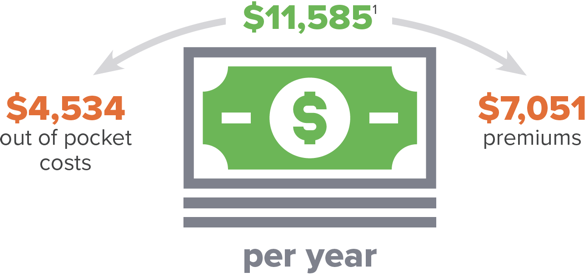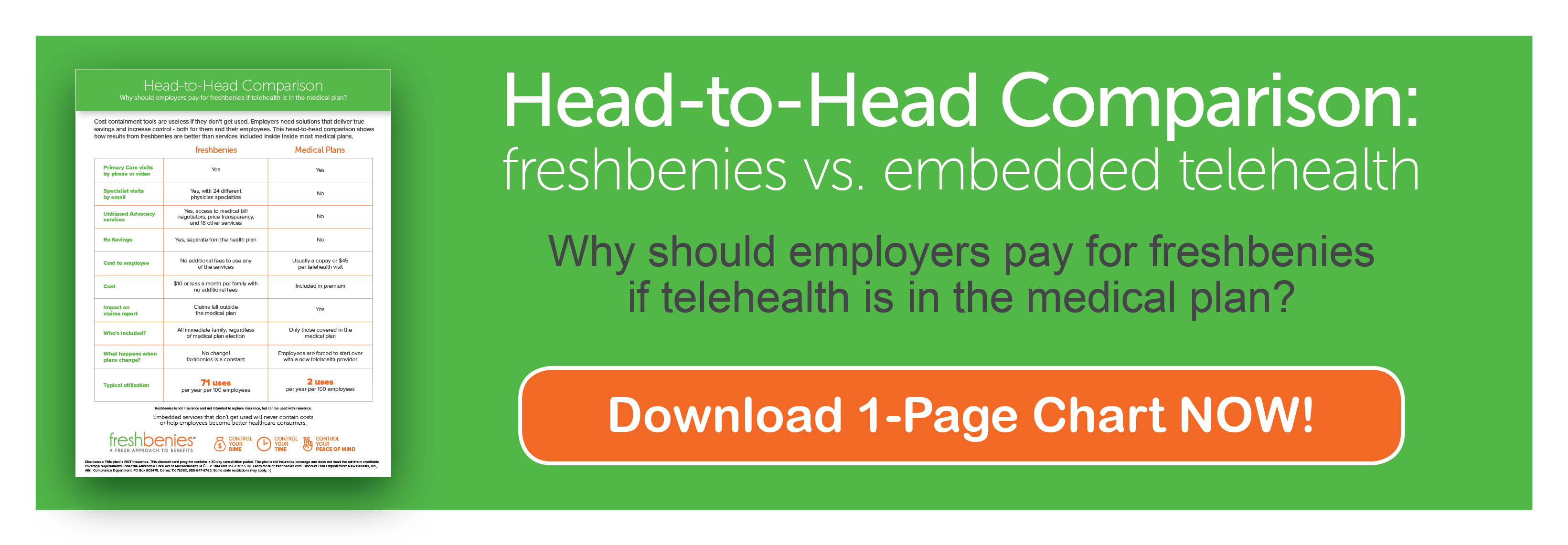Savings Networks: 4 Reasons You Should Reconsider Them
UGH, healthcare costs! We deal with the topic every day, but do we know the stats?
According to Milliman Medical Index, annual medical costs for a family of four is now nearly $27,000 – up $5,000 in the last 4 years. Employees are paying more for healthcare than ever before, too…

If you’re reading this, I know you’re already doing A LOT to help your employer AND employee clients control their healthcare. But, what do you know about savings networks?
What is a Savings Network?
Definition Savings Network (ˈSāviNGS ˈNetˌwərk): Sometimes known as Discount Network or Discount Plan, this is a collection of providers who have agreed to give a discount on services, procedures and products to buyers who are members of the program.
Think Costco or Sam’s Club for health-related shoppers. The cost to be a member of the program is typically low. Dental and Vision discount plans have been around for decades but were typically only available to those who worked at mega-sized organizations. These days, they’re more mainstream.
Based on my extensive research (well, you know), many brokers think it’s a weak discount, a throw-in freebie that employees don’t really use, or useless when employees have insurance. Some brokers think they’re confusing and don’t want them included in a benefits plan.
Can I challenge you to take another look? Remember, this is common practice in the medical plans you sell – providers offer a lower price to be included in an insurer’s medical network because the insurer is driving traffic to those providers.
Below are 4 reasons employees need quality savings networks as part of their benefits program…
1) Dependents
Employees have needy dependents. Some are covered under the employee’s plan. Some are covered under a totally different plan. Some aren’t covered at all and medical expenses can be a financial burden to employees when sickness strikes. A financial burden brought on by healthcare issues is exactly what employers are trying to avoid for their employees – and I won’t bore you with all the reasons because you already know them. Even if the employee has a full benefits plan, they have dependents that could use a Savings Network.
2) Higher Deductible Plans
It’s no secret that employees are paying more than ever before out-of-pocket and we’re asking them to “be better consumers.” In a typical year, some employees won’t hit their deductible and others will hit their out-of-pocket max. In either case, they’re paying full price for healthcare services on their own. Having a Savings Network to turn to in these situations keeps money IN their pocket.
3) Limited coverage
Sometimes insurance coverage only goes so far. After a specific number of visits or certain criteria are met, the employee is on their own. Employees with a Savings Network option won’t be stuck paying full price.
4) Non-covered needs
You may have noticed there are a few needs dropping off today’s plans – and some needs were never covered. Think non-formulary drugs, braces, hearing aids, designer frames, etc.
At this point, you might be thinking, “OK, but really? Are they that practical and useful for someone with a full medical, dental, vision insurance plan?” First, who actually has a full medical, dental, vision insurance plan these days (insert cricket noise here)?
I’m sharing 8 real-life examples of how members use Savings Networks with and without insurance…
1) PRESCRIPTIONS With insurance, Krystal’s monthly prescription was $88, but with her Rx Savings Network, it is $48. The first time she used it, the pharmacist was skeptical and assured her nothing would beat her insurance price. Krystal asked her to run the Rx Savings Network anyway and when the total came out $40 cheaper, she was so impressed she asked me how to get the program.
2) LAB TESTS Jean’s son may have a shellfish allergy, but she doesn’t have the cash to spend on doctor visits and testing to figure it out. Instead, she just tells him to stay away from shellfish. With a Lab Test Savings Network, she doesn’t need a doctor’s order, so she saved on pre- and post- testing doctor visits. Since most tests are under $100, she also saved on the actual test.
3) CHIROPRACTIC Nancy gets 20 chiropractic visits under her medical plan, but she needs more. Her teenage son has insurance, but his plan doesn’t include chiro visits and he goes every other week. After Nancy’s 20 covered visits were used, she saved on her visits and her son’s visits using her Chiropractic Savings Network.
4) DENTAL Connie has had some major dental work this year, so her insurance was maxed out. Then, she chipped a tooth (of course). Her first estimate for a complete replacement came in at $5,500. Then, she used her Dental Savings Network to get a second opinion at a different dentist who gave a much more conservative diagnosis. Even then, the cost without her Savings Network was $3,520. When Connie gave the receptionist her Savings Network card, she went to the back to calculate the new price. On her way back, she said, ‘This discount card is amazing!’ Connie’s new price was $1,487 saving her $2,033.
5) VISION There’s a commercial that says, "I have special eyes." For Michelle, "special eyes" means a greater cost when purchasing a year’s worth of contacts from that provider. After receiving several quotes from popular vision providers, she used her Vision Savings Network saving almost $150 on a year's worth of contacts.
6) HEARING AIDS Joe has worked in a warehouse his entire career and noticed his hearing isn’t what it used to be – he started to miss conversations. Since hearing aids aren’t covered on his medical plan, he was able to use his Hearing Aid Savings Network to find the right hearing aid solution. He received personalized service throughout the process, some perks (free batteries and follow-up care, money-back guarantees, warranties) and found a solution that was right for his budget.
7) MRI & CT SCANS There’s no way Enrique would hit his deductible – he had his normal covered annual physical but hadn’t spent anything on healthcare all year. At the end of his plan year, his doctor ordered an MRI. Enrique knew he would be paying 100% out of pocket, so he checked pricing using his MRI & CT Scan Savings Network. He saved 65% off the price he would’ve paid under his insurance plan.
8) DIABETIC SUPPLIES A recent study found that almost half of diabetics skip medical care due to costs. Mike has insurance, but there were limits to the amount of diabetic supplies that were covered. He used his Diabetic Supply Savings network to save on additional testing devices and test strips, so he could have them at his office and home.
FINAL WORD
Sometimes we hear push back from brokers about the confusion that Savings Networks can bring when provided alongside a health plan. Yes, it can be confusing. So, if you install these types of programs, it’s important to do it with a provider who has a great member experience and will simply explain how these networks help with and without insurance – in communication materials, on a customer service call, in online chat, etc.
(Warning: shamless plug ahead) You want your clients to say what one of our members recently told us: “freshbenies is a great teacher and advocate for consumers of healthcare – and it’s EASY.”
1 medicalxpress.com/news/2017-10-high-deductible-health-curb-usage.html
















